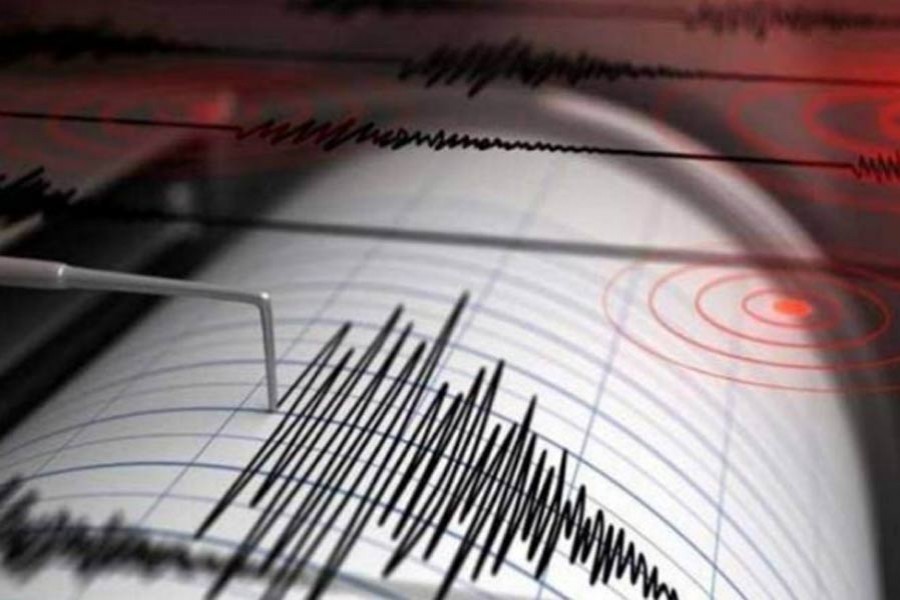While grappling with the recent massive fire disasters in Dhaka, the city's residents including the victims, disaster experts, and the authorities concerned have shown an exemplary camaraderie. But unfortunately, it has become a routine exercise in the capital --- be the disaster a calamitous blaze or a building cave-in killing scores of people. The message latent in the instant solidarity shown by all these people is simple: a resolve to prevent these disasters in the future. To our woes, in the long run, the commitment begins petering out until the collective resolve gets lost in total oblivion. It requires another disaster, fire incidents in particular, to recall the previous mishaps and take fresh vows to prevent these calamities.
The general people inhabiting the metropolis these days appear to be blissfully unconcerned about a big earthquake, the spectre of which looms menacingly over Dhaka. Barring a few earthquake experts, the average people living in Dhaka appear to have completely shaken off the fears and worries that took hold of them a few years ago. Those were prompted by frequent tremors and mild earthquakes that jolted the country in a span of 2/3 decades. Seismologists, however, continue to warn the general people and the authorities in charge of urban infrastructure of a big earthquake poised to strike Dhaka and the other quake-vulnerable cities and towns. Repeated smaller earthquakes are viewed as a kind of forewarnings of bigger ones among a large section of seismologists. The onslaught of a large-scale earthquake has long been overdue for Dhaka. It is an oft-repeated prediction. More than 100 years have elapsed since the great Assam Earthquake or Assam-Bengal Earthquake of 1897 shook the entire region terribly. It is believed that massive earthquakes return every one hundred years. Although the then town of Dhaka with few concrete structures was spared the fury of the quake-triggered devastations, the vast region of Assam and the city of Kolkata bore the brunt. The Bengal region saw several devastating earthquakes. They included a few before the onslaught of the Assam Earthquake. Of them, the Bengal Earthquake or Manikganj Earthquake of 1885 and the 1762 Bengal-Arakan Earthquake caused great calamities and panic to the people of East Bengal in particular. Owing to the close proximity of Manikganj to Dhaka, the apprehension about a 7/8 magnitude earthquake striking Dhaka may not be over-reactive. The fear has been ominously present over the nearly one-and-half centuries. Living not too far from the earthquake-stricken Nepal and spots in India including Bhuj, a similar calamity continues to pose great threats to the country's capital. Many other areas also remain vulnerable --- especially the regions of Chittagong, Sylhet and Mymensingh. What's especially alarming is the Earthquake Disaster Risk Index (EDRI) places Dhaka at the top among the 20 high-risk cities in the world.
The frenziedly rising capital of Bangladesh --- a notoriously unplanned metropolis, may not escape the wrath of a disastrous earthquake this time around. Apart from the active tectonic plates, the metropolitan Dhaka and its outskirts sit on several fault lines. A major one passes through the Tejgaon area. On the other hand, not to speak of a high-magnitude one, a slightly prolonged 6-scale earthquake may wreak havoc on the capital, in the older and middle part of the city in particular.
The country has a Ministry of Disaster Management and Relief. Due to the recurrence of cyclones and floods, it has to be chiefly focused on these natural calamities. Of late, it has started taking preparations to cope with the climate change impacts, especially the sea-level rise. With so many priorities warranting urgent attention, the calamity of big earthquakes finds itself on the backburner. At the same time, seminars, roundtables and workshops continue to be held in Dhaka round the year. But what galls a lot of people is the government's laidback attitude towards the feared disaster of earthquake strikes.
Experts rue the authorities' nonchalance over the calamity. Unlike cyclones or floods, an earthquake strikes without notice. It cannot be forecast, with the assault time ranging from pre-dawn deep-sleep hours to midnight. An earthquake lasts for 2 to 3 minutes. Effective disaster management following a calamitous earthquake can keep the extent of fatalities and other losses to the minimum. This is what happens in developed and fast developing countries. Recently Haiti and Chile experienced earthquakes. In the case of Haiti, a LDC (least developed country), the scale of devastation was enormous despite the quake being measured 6 on Richter scale. Chile, a middle-income country, was stricken by another quake with the magnitude of 8. It shows how the economic position determines the scale of quake-aftermaths in different countries.
Due to the country being repeatedly hit by cyclones with a past of great floods, Bangladesh is highly dependent on its disaster management operations. Owing to poor logistics, lack of essential resources including advanced rescue equipment and tools, the post-quake emergency operations may prove gigantic. There are similarities between rescue operations following earthquakes and cyclones. But in the case of earthquakes, that too in large and densely populated cities like Dhaka, the tasks become enormous. As for instance, owing to its unplanned growth with semi-improvised narrow neighbourhood roads, fighting big fires is feared to be a great challenge. Moreover, civil defence vehicles might find it difficult to bring out the badly injured from the piles of concrete rubble. In a couple of days, the trapped people will find it impossible to survive amid the stench of corpses. Emergency food and water supplies will be in complete disarray. In short, Dhaka sits far below even many ramshackle cities in the context of earthquake strikes; a large section of its 20.628 million residents and different infrastructure will possibly be shoved into the jaws of death & destruction after a massive onslaught. All-out preparations, including regular earthquake drills, have no substitute in this regard.


